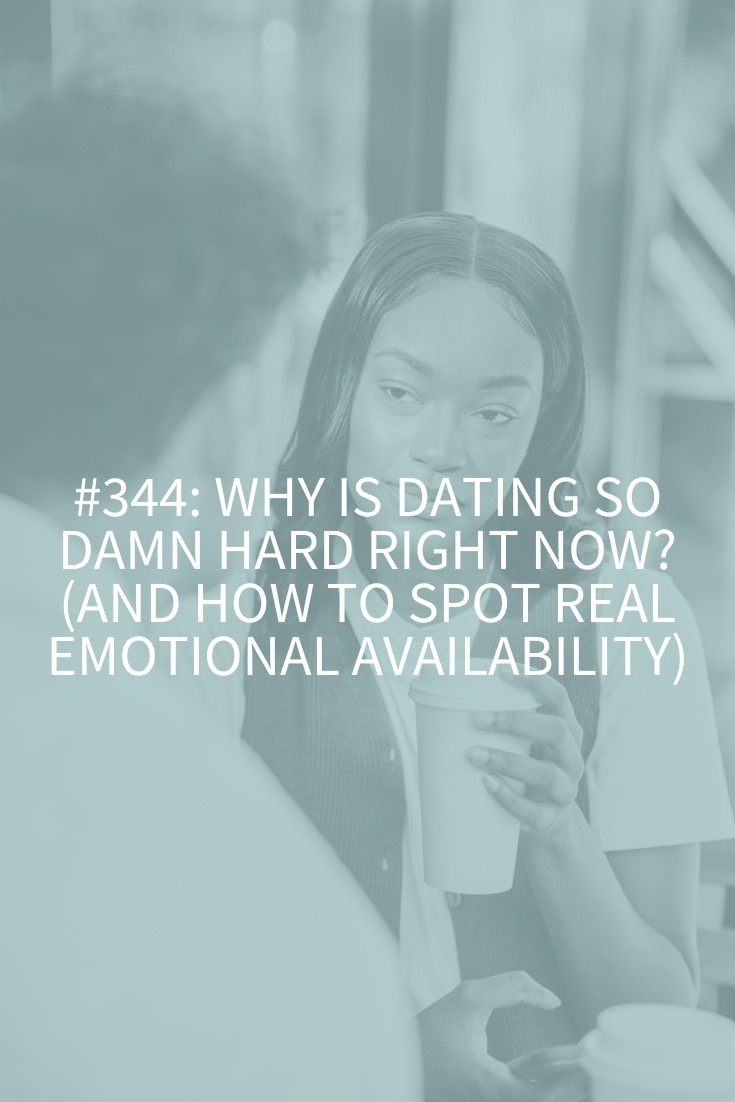
There you are in the problem. “I can’t pay these bills.” “My partner’s driving me crazy.” “I think my boss hates me.” “I need to lose weight.” “I’m lonely.”
Because this is a big issue in your life, you think about it often. You speak to your friends, therapist, clergy and anyone else who’ll listen. It keeps you up at night as you search for answers. You believe that the way to solve your issue is to fixate on it but that never gives you long-term results and you end up complaining about the same issues over and over!
Yes, you put yourself on a budget only to blow your newfound savings on a new pair of expensive shoes (you deserve them after all). You lose a few pounds over a few weeks only to gain it all back (and then some). You and your partner get along better for a little while, only to find yourself right back in those old negative patterns.
All of these “failures” make you think that you’ll never really find a solution and that the problem really can’t be fixed! Of course, the more you believe that (well, there is all this “evidence” staring at you) the more it’s a self-fulfilling prophecy!
You will never find effective, long-term solutions while you’re beating the drum of the problem because this approach to problem-solving does things to your brain that makes it impossible!
Today I’m going to teach you how you’re hijacking your own brain and the truly quick and effective way to not only solve your problems, but how to actually feel happier every day.
Love the podcast? I’d be so grateful if you left a review! Just launch Apple’s Podcast app on your mobile device, search for the Relationships Made Easy podcast, and scroll down to rate and review!
Let’s start with how your brain is being hijacked.
As you think about a problem you activate your amygdala, which triggers an alarm in your head and your fight/fight/freeze response. This alarm from your amygdala signals the hypothalamus and your sympathetic nervous system. Your hypothalamus sends out a call for stress hormones like adrenaline, cortisol, and norepinephrine.
The cortisol overstimulates the cells another part of your brain called your hippocampus. Your hippocampus tracks what happens in different situations. If you’ve had a disagreement with your partner, it tracks what they said, what you said, and your feelings and then consolidates all this into a memory that you can learn from. But all that cortisol from your hypothalamus weakens and eventually kills the cells in the hippocampus! This means that your hippocampus starts to shrivel and shrink! Since this is the part of your brain that puts things into perspective and calms your amygdala, it’s harder to have a “realistic” perspective and everything seems like it’s going to hell.
Ultimately, it becomes much harder to see the good happening and you get even more anxious, worried or depressed. All of these feelings then signal the amygdala again! And now you get deeper in this loop!
So now, not only are you no longer seeing the situation realistically, but all this activation of your amygdala shuts down the rational part of your brain (your prefrontal cortex) which is in charge of problem-solving and long-term planning!
So, you cannot come up with effective, long-term solutions and that’s why the problems in your life continue.
Did you ever notice that you often get great problem-solving ideas in the shower, or when you’re engrossed in watching a baseball game or when you’re cooking? It’s because you allowed your mind to relax and your feelings were happy or neutral. You were in a calm state so your thinking brain can actually turn on!
Basically, if you want to be an effective problem-solver, you need to be in a “good” mood. And the only way to be in a good mood is to have good thoughts because you feel the way you think.
The problem many people have with “positive thinking” or just being told not to think about a problem is that they find they can’t do it! Their mind goes back to the problem. You end up saying “yeah but” in your head. Yeah, I’m feeling a little better, but I’m still frustrated with my husband! I need to fix this problem! And then you’re back down the rabbit hole!
What you’ve got to do instead is actually start truly thinking differently about the problem and you do that with one of my all-time favorite tools: having the next best-feeling thought.
Let me say first, and you really need to hear this: The goal of the next best-feeling thought is to start thinking differently so you can feel better first. You’re not trying to solve the problem at all!
So, let’s get into the nitty gritty of how to do this. When I’m doing this “next best feeling thought” exercise, I get out a piece of paper and write these down. You can do it in your head if you want, but I’ve never found that as effective as writing it out so I’m going to encourage you to start with doing this in writing first.
The key is to start as general in your thoughts as you need and then you can gradually become more specific. Let’s say you’re really annoyed with your partner and you’ve got a good head of steam going: “He’s such a jerk!”; “I can’t believe she said that!”; “Who do they think they are?!” You might be contemplating revenge or a breakup or just thinking of all the things you should have said.
You can’t go from that to “I love my partner so much. I shouldn’t be upset.” It’s not going to work! The bullshit meter in your head will be setting off the alarm and you’ll just end up back in all those negative thoughts and feelings. Or maybe you shake your head and tell yourself to, “Stop that. Focus on the good!” BUT IT DOESN’T STICK! It’s because you went too far, too quickly. You’ve got to take this tiny step by tiny step.
Step 1: Set a Feeling Goal
You want things because of how you think they’ll make you feel. You want money to pay your bills so you can feel relief and feel secure. You want your partner to have your back so you can feel secure and loved. See how it works?
So, let’s look at some issue with your partner and set a goal there. Maybe it’s to feel love and compassion for your partner (and yourself) or maybe it’s to feel connected and emotionally close to your partner.
It’s good to have the big goal, but a goal can’t be focused on another person. For example, it can’t be a goal for your boss to like you, but it can be a goal to feel at ease and confident at work.
Step 2: Write Down a Next Best-Feeling Thought You Believe
The key is to start with something you believe. This usually means you have to start out very general and broad. In fact, you might need to start out with something so general that it has nothing to do with your partner directly at all. You might begin with thoughts about other relationships, people or things you believe, in general.
- I’ve met a lot of amazing people in my life.
- I’m grateful for my amazing relationship with my sister and my best friend, Ann.
- I love to laugh and the best laughs are always with other people.
- My emotions come in response to my thoughts. I feel the way I think so I’m going to choose to direct my thoughts more often.
As you write or say these things out loud you’ll absolutely start to notice a lessening of those negative emotions. You’ll find yourself starting to physically and mentally relax a bit. This is all good. It means you’re on the right path but, don’t rush it. Don’t get impatient.
You’ll know if you rushed if you get any push back or resistance from yourself. Resistance can show up in a bunch of different ways. For example, maybe your next best-feeling thought was: “I really love my partner, I don’t know why I’m so upset about this.”
If you’re not ready to be in that place, your resistance could show up as:
- Having a “yeah, but” thought (“Yeah, but they really need to start appreciating me! I’m sick of this!”)
- Your energy going down (“God, this is exhausting!”)
- Still feeling crappy or revving up to a worse place: (“This is never going to work. Nothing ever helps!”)
- Arguing with yourself (Sure, I know we love each other, but is that enough?”)
- Judging yourself (“I just need to start being more patient.”)
- Not believing yourself (“This is such bullshit!”)
If you notice any resistance, no matter how small, pull back to a more general place again or take a different tack in your thoughts:
- I’ve always been able to accomplish anything I set my mind to
- When I’m consistent with things, I always see a shift
- I’m really ready to be happier in my life and do whatever it takes to get there
- I deserve to be happy and to feel proud of myself. I’ve done so much in my life!
- I feel safe when my partner checks all the doors and windows every night
- I like the feeling of coming home and seeing my partner’s car in the driveway
- I feel happy when my partner compliments me
- I love that my partner always calls me “Hon or Babe”
Again, notice any resistance – any thought that pops up and pull against what you just said. If there’s any – pull back wider.
- I like knowing that everything is figure-out-able
- I’ve always been able to count on myself to find solutions
- I’ve come a long way in my life – there are things to be proud of
- I’m responsible for my life
- I’ve co-created all my relationships
- I’ve co-created this relationship with my partner to where it is now
- That means I can co-create this relationship to where I want it to be by focusing on my own actions
Often when I’m doing this exercise I notice that I get on a roll and “all of a sudden” something negative pops up – some resistance. It becomes hard. When it’s hard – when it’s too hard to think of anything, pull back and go more general. You might even need to go so general that you’re saying something about the world in general that you believe: “I like walking on the beach.” That’s fine. Start there and just keep going for the next best feeling thought – it’ll bring you to the same place.
Let’s go with that example:
- I like walking on the beach.
- Walking near the ocean brings me feelings of peace and calm.
- I like the feeling of the sand under my feet.
- I love looking at the horizon having that feeling of expansiveness and beauty.
- I love that feeling of being quiet and still.
- Bringing stillness and quiet into my relationship is something I crave.
- Anytime I feel stillness and centered in my life I feel amazing.
- I sometimes feel that same feeling when I’m lying in bed at night snuggled up to my partner’s back. It feels like all is OK in the world.
You can start with something negative too:
If you’re way down the rabbit hole of negative momentum, your next best-feeling thought might be something a bit negative:
- Well, this sucks
- It’s no fun being here again
- I’d really like not to feel like this anymore
- I’m so tired of this same argument
It’s OK if you need to start here, as long as you continue to stay broad, general and vague as possible. Stay out of the specific details of why something sucks (you know how you feel worse and worse when you tell those specific stories over and over again)!
Your next best-feeling thoughts after “this sucks” might be:
- This too shall pass
- I’ve felt worse than this before and I always manage to pull myself up
- Nothing lasts forever
Then from there you can get to a little better-feeling thought and so on.
Remember, this is all about getting into a new feeling-state and marinating in it as much as possible. This isn’t about solving the problem here and now. This is about stopping your brain from being hijacked. This is about being able to see things from a new perspective (which you’ll be able to do when your hippocampus is able to function properly.
Very simply put, this is having a love-based reaction instead of a fear-based one. Nothing improves long-term from a fear-based place. Period. End of story.
RESOURCES
The Real Reason You Have Negative Thoughts and 2 Things You Can Do About It
Finally Stop Having Negative Thoughts
Ready to find out what goes on inside that crazy mind of Abby’s?
Get your weekly newsletter with all things Abby and life
Subscribe today to get my weekly thoughts, best practices and funny stories (you won’t believe my life!). This weekly reminder will keep you on the path to creating connected, happy relationships (especially the one with yourself)!






